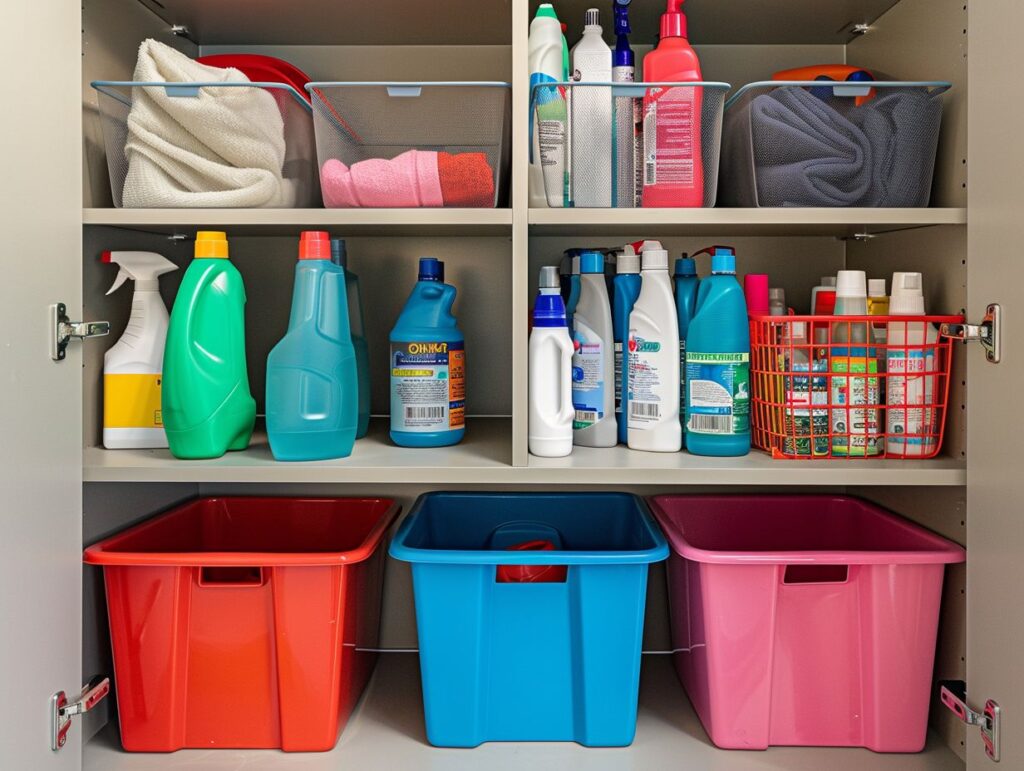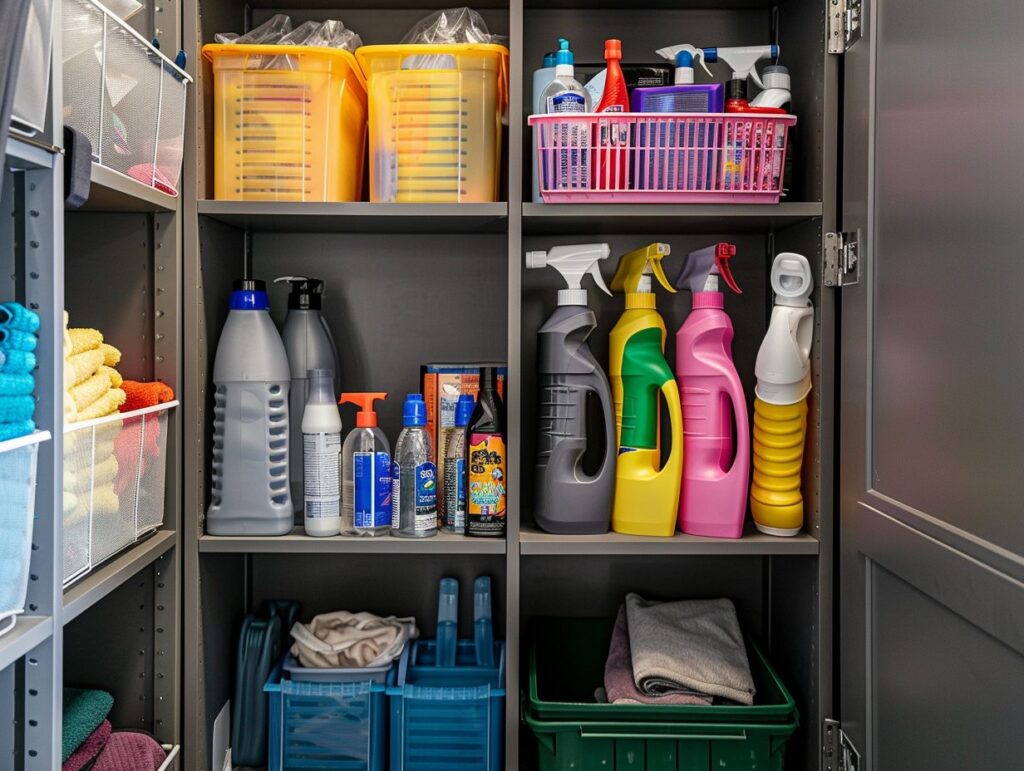The Challenges of Scale in Corporate Office Cleaning and How to Overcome Them
Walk into a corporate office tower in downtown Houston, and you’ll see the scale right away. Glass façades stretching into the skyline, expansive lobbies, endless corridors, and hundreds—sometimes thousands—of people moving through every day. Keeping all that clean isn’t just about dusting desks and mopping floors. At corporate scale, cleaning becomes a sophisticated operation that requires strategy, coordination, and a whole lot of logistical sense.
Many companies underestimate how drastically cleaning needs change once a business grows beyond a few floors. The sheer number of rooms, staff schedules, and types of surfaces create an entirely new level of complexity. Add in Houston’s heat, humidity, and unpredictable weather, and the task becomes even more demanding.
This article breaks down the real challenges of cleaning at scale—especially in the corporate world—and offers practical ways to overcome them. Whether you manage facilities for a downtown high-rise, a suburban business park, or a tech campus on the city’s edge, understanding these issues can make the difference between a clean office and a chaotic one.
The Scale Problem — Why Big Offices Aren’t Just “More of the Same”
Cleaning a large office isn’t a matter of hiring more people and buying bigger equipment. Scale multiplies challenges rather than simply adding to them. Each new floor brings extra rooms, different layouts, more foot traffic, and higher chances of operational snags.
In Houston’s central business district, for example, many corporate towers house thousands of workers across multiple tenants. Cleaning crews must handle diverse environments—from busy shared restrooms to executive suites with marble surfaces and custom furniture. What works for one floor may fail miserably on another.
Complex Logistics and Scheduling
Coordinating cleaning schedules in a large corporate space can feel like managing a miniature city. Different teams often work in shifts to cover 24-hour operations, especially in industries like healthcare, finance, and energy. Hybrid work models make things trickier. Some areas sit empty for days; others stay packed with rotating staff and visitors.
The key is flexibility backed by data. Smart managers build dynamic schedules that respond to occupancy levels. In a large Houston office, for instance, Monday mornings and Thursday afternoons might see the heaviest use. Cleaning frequencies can be adjusted around those peaks to reduce wasted labor and keep visible areas spotless.
Resource Allocation and Workforce Management
At scale, distributing people, supplies, and machinery across multiple floors or buildings becomes a daily juggling act. A missing vacuum cleaner or low supply of disinfectant wipes can derail an entire shift. Communication gaps between teams only amplify the chaos.
Successful operations rely on structured workflows and well-placed supply stations. Large buildings often benefit from assigning dedicated teams to specific floors to build familiarity and accountability. Managers who use digital tracking systems can monitor inventory levels in real time, ensuring equipment and materials never fall short when they’re needed most.
Maintaining Consistency Across Every Floor
Consistency is the hallmark of professional cleaning—but it’s also the hardest to maintain at corporate scale. What happens when the 20th floor sparkles, but the 5th looks neglected? The client doesn’t remember which floor was cleaned well; they remember the one that wasn’t.
Setting and Enforcing Uniform Standards
Every cleaner may think they know what “clean” means, but standards vary widely without clear guidelines. Big operations succeed when they implement structured checklists, defined cleaning zones, and measurable benchmarks.
Digital checklists and cloud-based inspection apps help ensure every area meets the same standards. Supervisors can upload photos, verify completion, and track recurring issues. These systems replace paper reports and give managers instant visibility across large sites.
Consistency also comes from setting realistic expectations with clients. A massive office complex can’t be maintained to the same intensity daily across every inch. Defining “high-priority zones” (lobbies, restrooms, conference rooms) and rotating deep-clean schedules for lower-traffic areas keeps standards high without burning through budgets.
Training and Accountability
A well-trained team is the backbone of quality cleaning. In large operations, staff turnover and varied experience levels can lead to uneven performance. Some cleaners might be seasoned professionals; others may be working their first job in the field.
Regular training refreshers ensure everyone understands the same processes, products, and safety protocols. Larger firms often appoint “floor leads” or “zone supervisors” to provide onsite oversight. A Houston cleaning contractor I once worked with used peer review systems, where teams inspected each other’s work weekly. It built camaraderie and encouraged mutual accountability—something that scales remarkably well in high-capacity operations.
Dealing With Houston’s Unique Environmental Factors
Every city has its quirks, but Houston presents a unique blend of environmental challenges that directly affect cleaning operations. The humidity, pollen, and storm seasons all influence how facilities must be maintained to stay safe and healthy.
Humidity, Mould, and HVAC Hygiene
Houston’s climate is famously muggy. High humidity levels make large offices prone to moisture buildup, especially in basements, storage rooms, or around air vents. If left unchecked, this can lead to mould growth, unpleasant odours, and even health complaints from staff.
Preventing this requires a partnership between cleaning crews and building engineers. Regular HVAC cleaning, filter changes, and vent dusting are vital. Dehumidifiers in moisture-heavy areas, along with the use of antimicrobial cleaning products, can stop mould before it starts. Large facilities should also schedule quarterly air quality checks to keep problems from spreading unnoticed.
Storm Season and Post-Event Cleanups
Hurricane season is a fact of life in Houston. Even when buildings avoid major flooding, heavy rain and high winds can cause leaks, damp carpets, and debris-filled lobbies. After a major storm, cleaning schedules often need to pivot overnight.
Prepared facilities keep “storm kits” on-site—wet vacuums, absorbent materials, industrial fans, and disinfectants—to allow rapid cleanup. Some cleaning companies offer 24-hour emergency response teams specifically for weather-related incidents. Having a clear plan in place ensures employees return to a safe, clean workspace as soon as operations resume.
The Technology Factor — Using Smart Tools to Scale Efficiently
Technology has transformed how large corporate cleaning contracts operate. What once depended on manual supervision and paper checklists now thrives on data, sensors, and real-time feedback.
Real-Time Data and Automation
IoT (Internet of Things) technology is increasingly common in major office buildings. Smart soap dispensers can alert staff when supplies run low. Occupancy sensors track restroom use to trigger extra cleaning during high-traffic periods. Even robotic vacuum cleaners can handle routine floor maintenance overnight, freeing human workers for detail tasks during the day.
In Houston’s newer office complexes, these tools help cleaning managers allocate resources more intelligently. Instead of cleaning every area on a strict schedule, teams can focus on spaces that actually need attention, saving both time and cost without lowering standards.
Streamlined Communication
The bigger the site, the easier it is for communication to break down. Cleaning apps and cloud-based management systems solve that by keeping every team member connected. Supervisors can issue instant updates, photos, or work orders through mobile platforms.
For instance, if a spill occurs in a high-traffic conference corridor, the cleaning team receives a notification immediately, and the nearest available cleaner is dispatched within minutes. This responsiveness not only keeps operations smooth but also reassures corporate clients that issues are being handled proactively.
Strategic Planning and Continuous Improvement
Large-scale cleaning success isn’t achieved once—it’s maintained through ongoing review and adaptation. Every major corporate facility benefits from a structured strategy for measuring performance and improving efficiency over time.
Metrics That Matter
Tracking the right performance indicators is vital for staying consistent. Key metrics include:
- Inspection scores from supervisors or clients
- Response times to incidents or urgent requests
- Equipment uptime and maintenance records
- Staff retention and training completion rates
By compiling this data into dashboards, managers can identify recurring issues before they escalate. If restrooms on certain floors consistently underperform, for example, it may reveal a supply bottleneck or staffing gap. Data helps convert guesswork into precise action plans.
Partnering with the Right Cleaning Provider
Not every cleaning company can handle corporate scale. Experience with smaller offices doesn’t necessarily translate to managing a skyscraper or multi-building campus.
When choosing a cleaning partner, look for evidence of multi-site experience, strong supervision systems, and transparent reporting. Reputable providers should offer detailed cleaning plans, safety certifications, and digital documentation of completed work. Many Houston-based firms now specialise in energy company HQs and healthcare campuses, bringing a deep understanding of the region’s environmental and regulatory needs.
A strong partnership allows clients and cleaning teams to align on goals—whether it’s achieving sustainability targets, reducing waste, or maintaining pristine executive spaces without disrupting operations.
Conclusion
Scaling up corporate cleaning in Houston is no small feat. The larger the space, the more moving parts come into play—complex schedules, high expectations, environmental pressures, and the constant need for consistency. Yet, with the right planning, smart use of technology, and a focus on people and process, even the most sprawling offices can stay immaculate day after day.
Houston’s skyline keeps growing, and so do its corporate demands. By facing the challenges of scale head-on—rather than treating them as simple extensions of smaller jobs—businesses can ensure their offices remain spaces that reflect professionalism, care, and pride in every square foot.






